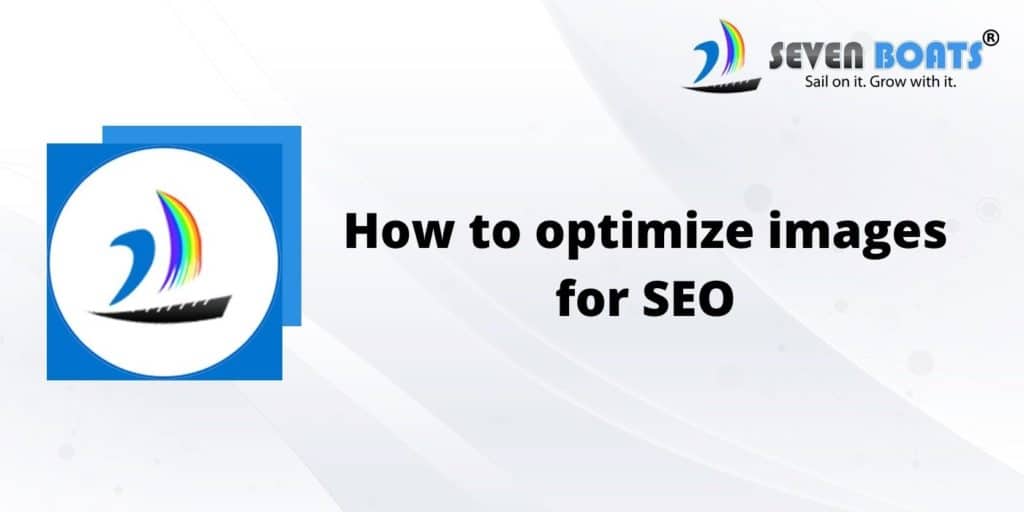
How to optimize images for SEO? When it comes to SEO, image optimization is one of the most important things you can do to help your website rank higher in search engine results pages (SERPs). In fact, optimizing your images can have a bigger impact on your SEO than you might think! In this blog post, we will discuss some tips for optimizing your website images for better SEO.
Introduction
Image optimization involves delivering high-quality images in the right format, dimension, size, and resolution while keeping the smallest possible size. It’s essential for improving page load speed, boosting SEO ranking, and enhancing user experience.
Importance of Image Optimization
- Improved Page Load Time: Optimized images are smaller in size and hence load faster. This improves the overall page load time, which is a key factor for user experience and SEO.
- Enhanced User Experience: Images that are optimized effectively appear clear and load quickly, leading to a better user experience.
- Reduced Bandwidth Usage: Optimizing images reduces the amount of data that needs to be transferred, reducing hosting costs and saving bandwidth for users.
- Improved SEO Ranking: Search engines favor websites that load quickly, and image optimization plays a crucial role in this.
How to optimize images for SEO
Image file name
First and foremost, it is important to make sure that your image file names are descriptive and keyword rich. For example, instead of naming an image “IMG_1234.jpg,” you should name it something like “website-image-optimization-tips.jpg.” This will help search engines understand what the image is about and how it relates to your website content.
Image Alt text
In addition to descriptive file names, you should also use relevant alt text for each of your images. The alt text is the text that appears when an image does not load on a web page (or when a user hovers over an image with their cursor). This text helps describe the image to both users and search engine crawlers, so it is important to make sure it is keyword rich and relevant to your website content.
Read also: What is image alt tag
Image file format
Another thing you can do to optimize your website images for SEO is to use the right file format. Generally, JPEG files are best for photos and graphics, while PNG files are better for logos and other text-based images. You should also avoid using too many image formats on your website, as this can confuse search engine crawlers and cause them to rank your pages lower in SERPs. Use latest SVG or webp file format.
Image Size – Width and height
Finally, be sure to size your images correctly. oversized or undersized images will not look good when displayed on a web page, and they can also slow down your website loading times. Make sure that all of your images are sized appropriately for the layout of your website before uploading them.
By following these image optimization tips, you can help improve your website’s SEO and visibility in search engine results pages. Optimizing your images is a simple and effective way to boost your website’s traffic and rankings, so be sure to start using these tips today!
Now that we have discussed some basics of image optimization for SEO, let’s move on to some more advanced tips.
CDN
One advanced tip is to use a CDN (Content Delivery Network) to serve your images. A CDN can help improve your website’s loading time by caching your images and serving them from a nearby server. This can result in faster load times for your website pages, which is beneficial for both users and search engines.
Image Compression
You can also use image compression to improve your website’s SEO. Image compression is the process of reducing the file size of an image without compromising its quality. This can be done using online tools or software programs like Photoshop. Compressing your website’s images can help them load more quickly on web pages, which will improve overall user experience and may also boost your SEO rankings.
Include Captions
While not necessary for SEO, image captions can enhance user experience, providing context for images.
Use of Keywords
Finally, you should always make sure that your images are properly tagged with relevant keywords. By tagging your images with the right keywords, you can help increase their visibility in SERPs and improve your website’s SEO.
Create Image Sitemaps
If your site uses JavaScript galleries or image pop-ups, Google recommends using image sitemaps to ensure those images are found by search engines.
Leverage ‘Lazy Loading’
If your site uses a lot of images, consider implementing ‘lazy loading’. This means only loading images that are in or near the viewport.
Use Social Media
Sharing your images on social media, especially if they’re original graphics or infographics, can generate backlinks to your site.
Test Your Images
Use Google’s PageSpeed Insights to see how your images are affecting your page speed.
Best Tools For Image Optimization & Image Compression
Image optimization and compression are vital for improving website speed and SEO. Here are some of the best tools available for these tasks:
- Compress Now: This online tool allows you to adjust the level of compression and supports JPEG, GIF, and PNG file formats.
- JPEG Optimizer: As the name implies, this tool is specifically designed for optimizing JPEG images. It allows you to compress photos online and control the compression level.
- TinyPNG: TinyPNG uses smart lossy compression techniques to reduce the file size of your PNG files. It also supports JPEG files.
- Optimizilla: This tool uses a combination of the best optimization and lossy compression algorithms to reduce the size of JPEG and PNG images. It allows you to upload up to 20 images at a time.
- JPEG.io: This tool converts any major image format into a highly optimized JPEG. It’s easy to use and offers a good balance between image quality and file size.
- ImageKit: ImageKit is an image optimization software that offers real-time image optimizations, automatic best format selection, and a global CDN for fast delivery.
- Cloudinary: This is a comprehensive cloud-based solution for image and video management. It includes features for image optimization and transformations.
- ShortPixel: ShortPixel is a WordPress plugin that optimizes images to help improve website performance. It offers both lossy and lossless image compression.
- NitroPack: NitroPack is a cloud-based, all-in-one performance optimization service. It includes advanced image compression and lazy loading features.
- Imagify: Imagify is a WordPress plugin that can optimize images in bulk or individually. It offers three levels of compression.
Each of these tools has its strengths and is suited to different needs. Choose the one that fits your specific requirements best.
By following these tips, you can optimize your website images for better SEO. Optimizing your images is a simple and effective way to boost your website’s traffic and rankings, so be sure to start using these tips today! Thanks for reading. I hope this helps.
Remember, the goal of image optimization isn’t just to make files smaller; it’s to create the best possible experience for your users while making your site attractive to search engines.
Related reading – How to optimize landing page for better conversion? and How to optimize an image gallery website?








0 Comments